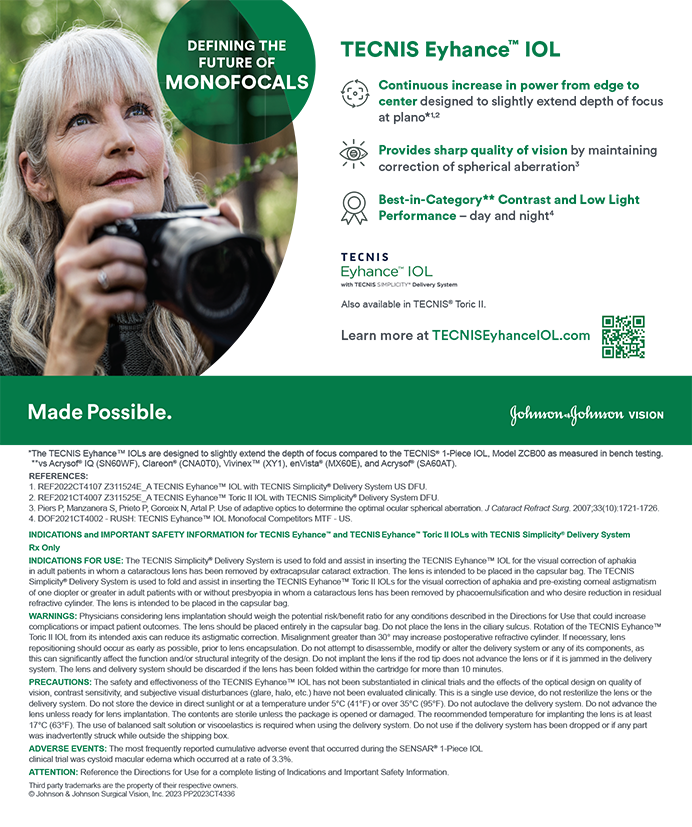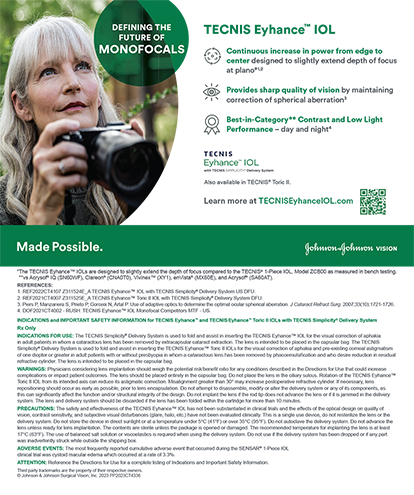| This month's international article provides an excellent review of the state of eye care in eastern Africa from Susan Lewallen, MD, and Paul Courtright, DrPH. Together, they have forged a unique and successful public health approach to the development of eye care in Tanzania as the directors of the Kilimanjaro Centre for Community Ophthalmology in Moshi. Combining research with clinical improvements, this amazing couple is helping to lead the fight against needless blindness in eastern Africa. |
| –Geoffrey Tabin, MD, Section Editor |
In 2001, just before we moved to Tanzania to establish the Kilimanjaro Centre for Community Ophthalmology (KCCO), we wrote about blindness in Africa for the British Journal of Ophthalmology.1 The article mainly focused on the impact of specific disease entities on populations in Africa, but it also addressed the importance of establishing adequate services and infrastructure to meet Vision 2020's goal of eliminating avoidable blindness by the year 2020.
The KCCO was founded to foster the development of community-based ophthalmology in eastern Africa. Over the past 7 years, the organization has been active in Egypt, Eritrea, Ethiopia, Djibouti, Kenya, Uganda, Tanzania, Rwanda, Malawi, and Zambia. Interested individuals from other African countries also attend training sessions organized by the KCCO. This article reviews the present state of blindness in eastern Africa and examines the challenges that remain.
TRAINING OPHTHALMOLOGISTS
Our 2001 article called for more trained ophthalmologists in eastern Africa. Since then, the number of institutions providing this training has increased from four to eight. Ethiopia, Tanzania, and Uganda currently have two programs apiece (one more each than in 2000). Kenya still has only one program, and Malawi started an intake effort in 2007. We have also seen an increase in the number of people from the neighboring countries of Zambia, Djibouti, Eritrea, and Rwanda—which do not have residency programs—applying to training programs at Kenyatta University in Nairobi, Kenya, and Kilimanjaro Christian Medical Centre in Moshi, Tanzania.
In 2005, the five residency programs in Tanzania, Uganda, and Kenya established the Eastern Africa College of Ophthalmologists (EACO) to improve the quality and quantity of ophthalmic training available in eastern Africa. By the end of 2007, it is hoped that the college will standardize the educational process by adopting the International Council of Ophthalmology's curriculum and examination standards, thereby ensuring that graduating ophthalmologists meet the internationally recognized standards of proficiency. Graduates of the EACO can receive fellowship training in retinal diseases at the Kilimanjaro Christian Medical Centre or in pediatrics at the Comprehensive Community Based Rehabilitation in Tanzania Hospital in Dar es Salaam.
Although opportunities for ophthalmic training in Eastern Africa have increased over the past 7 years, institutions will have to overcome several challenges to meet the region's need for trained eye care professionals. The programs' lengths vary from 3 to 4 years, and the surgical volume at some of the institutions is too low to provide students with adequate training. Any institution that wants to achieve a sufficiently high volume of cataract surgery to fulfill its needs for clinical training requires support from an outreach program. A lack of autonomy or weak management within eye care departments that are part of large general institutions can create additional problems when the departments' abilities to change pricing, personnel, and programs are limited.
Interest in ophthalmology as a field is still low in eastern Africa, and many training scholarships go unfilled. Salaries paid by governments remain low in all fields of medicine, and the cost of setting up a practice limits the capacity of ophthalmologists to work privately.
Other important training issues for eastern Africa beyond the scope of this article are the training of nonphysician cataract surgeons, ophthalmic nurses, and primary eye care workers.
COMMUNITY OPHTHALMOLOGY AND EVIDENCE-BASED APPROACHES TO EYE CARE
In 2001, we wrote that a "legion of ophthalmologists trained only in recognition and treatment of eye disease will not prevent blindness in Africa."1 There is increasing awareness in eastern Africa that medical knowledge must be supplemented by a proficiency in community ophthalmology. The skills that fall under this heading include the ability to plan and implement programs as well as to ensure that programs are properly monitored and supervised. A knowledge of epidemiology, the ability to generate and interpret evidence (quantitative and qualitative data) to determine what works and what does not, and the skills to supervise efficient teams within a hospital are also crucial.
Evidence from eastern Africa is helping us understand critical issues important to community ophthalmology such as the causes of the unfortunate delays in bringing children for surgery, the real cost of cataract operations and the population's willingness to share the price, factors that affect eye care professionals' productivity, and which strategies fail or succeed in ensuring that patients undergo cataract surgery.2-5 Workers are using this evidence, much of which was collected by surveys such as the Rapid Assessment of Avoidable Blindness,6 to guide policies and design programs that provide eye care to more patients than would be possible if they assumed that 1 of Africans were blind.
Of course, challenges hinder the conversion of research findings into practical programs and policies, especially when the findings do not match the expectations of governments or donors. More evidence-based advocacy is needed. Building skills for community ophthalmology will remain a challenge, because many programs receive minimal support from within individual countries and continue to rely on external financial support. The curricula for professional and paraprofessional providers still focus primarily on clinical skills, whereas these individuals are expected to design, implement, and manage outreach programs. This disconnection between education and implementation will continue to hamper efforts to reduce blindness in Africa.
DISTRICT-BASED PLANNING
One measure that has improved the delivery of eye care and the prevention of blindness in eastern Africa has been the recent adoption of Vision 2020's district-based model. Instead of designing services to meet the needs of a particular hospital, the district-based model takes a public health approach to eye care in which existing service providers and donors work together to plan, manage, and monitor services for the 1 to 2 million people who live within a designated area.
With effective planning, private entities, nongovernmental organizations, and governmental services can collaborate to decrease the waste or duplication of resources and to deliver eye care more efficiently. Such planning and coordination have been facilitated by the adoption of decentralized decision-making (which goes under a host of names) by many governments in the region.
Uganda has led the way in placing and equipping eye care facilities and ophthalmologists in districts. Over the coming years, efforts in this country will focus on staffing these teams fully and implementing strategies to ensure that the facilities are utilized effectively.
A practical problem faced by surgeons in eastern Africa, especially those who work for governmental services, is that they do not have a reliable source of consumables. They depend on hit-or-miss donations or inflexible supply systems, a situation that does not encourage or allow good planning. Uganda has solved this problem by developing a central supply house from which any surgical program in the country can use local currency to purchase low-cost IOLs, sutures, and other consumables efficiently. This solution was possible only through the cooperation of nongovernmental organizations, various governmental ministries, and personnel working to prevent blindness at the national level.
Workers in eastern Africa also have a growing appreciation for Vision 2020's team model, in which the ophthalmologist is supported by a manager, low-vision technician, refractionist or optometrist, counselor, and a nursing staff. This team approach ensures that every member is working at his best to provide efficient care. For example, a competent administrative staff can free up ophthalmologists to spend more time operating. The team approach allows eye care providers to offer more comprehensive services in addition to cataract surgery.
Significant challenges remain to expanding Vision 2020's district-based approach in eastern Africa. Nongovernmental organizations and governments have not always worked together harmoniously, planning and implementation skills at the district level are often weak, and disease-specific nongovernmental organizations/donors exert pressure to direct the delivery of eye care. At the national level, organizations and entities have not embraced the decentralization policies that allow districts to take charge.
Stronger planning skills and more empowered district Vision 2020 teams are needed to make additional progress. Ophthalmologists who do not have or do not know how to develop managerial support may end up spending a considerable amount of time on activities other than caring for patients. Competent managers, just like skilled clinicians, are hard to attract and retain at the district level.
CONCLUSION
Over the past 7 years, considerable progress has been made in improving eye care in eastern Africa, but many challenges must be met during the next 7 years to realize the goals of Vision 2020 in this region. Although the number of trained ophthalmologists has increased, many more are needed to meet the demand for eye care. An infrastructure that will allow these ophthalmologists to work effectively is also required. Finally, eye care providers in eastern Africa need to develop the community ophthalmic skills that will help them build the much-needed infrastructure.
Information on the Kilimanjaro Centre for Community Ophthalmology (courses, research reports, etc.) may be found at www.kcco.net.
Paul Courtright, DrPH, is Codirector of the KCCO Tumaini University/KCM College in Moshi, Tanzania. He may be reached at 1 255 27 2753547; pcourtright@kcco.net.
Susan Lewallen, MD, is Codirector of the KCCO Tumaini University/KCM College in Moshi, Tanzania. She may be reached at 1 255 27 2753547; slewallen@kcco.net.


